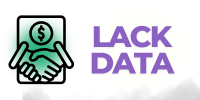In the bustling digital landscape, where attention spans are fleeting and competition is fierce, the initial impression a new user receives can make or break their journey with your product or service. This is where the often-underestimated welcome sequence steps in – a series of automated communications designed to guide, inform, and engage new users from the moment they sign up. But in the rush to acquire new users, are we truly leveraging the power of welcome sequences, or are we letting this critical opportunity slip through our fingers?
A well-crafted welcome sequence isn’t just a courtesy; it’s a strategic imperative
It’s your chance to make a lasting first impression, to set expectations, and to immediately demonstrate the value your offering provides. For many businesses, however, the answer to “Are we using welcome sequences for new users?” might be a hesitant “partially” or, worse, a resounding “no.” This oversight can lead to higher churn rates, lower user engagement, and a missed opportunity to foster long-term customer relationships.
Why Welcome Sequences Matter (More Than You Think)
Let’s dissect why a robust welcome sequence is so crucial for any digital product or service:
1. Setting the Stage and Managing Expectations
The moment someone signs up, they have an idea of what they expect from your platform. A welcome sequence allows you to immediately confirm their decision, reiterate the core value proposition, and set clear expectations for what they can achieve. This proactive communication reduces confusion and anxiety, making the user feel more comfortable and confident in their choice.
2. Guiding Users to Success (and Activation)
Think of your welcome sequence as a personalized tour guide. It should lead new users step-by-step through the initial setup, highlight key features, and demonstrate how to achieve their first “aha!” moment. This is where you can drive product adoption by showcasing your platform’s most valuable functionalities. Without this guidance, users might get lost, frustrated, and ultimately abandon your service before experiencing its true benefits.
3. Building Trust and Rapport
Consistent and helpful communication builds trust. A well-timed welcome email or in-app message can make a new user feel valued and supported. It’s an opportunity to introduce your brand’s personality, offer helpful resources (like FAQs or tutorials), and provide clear paths for support if they encounter issues. This foundational trust is vital for long-term customer loyalty.
4. Reducing Churn and Increasing Retention
The early days of a user’s journey are the most vulnerable. If they don’t quickly grasp the value or find the platform intuitive, they are highly likely to churn. A strategic welcome sequence actively combats this by proactively addressing common pain points, showcasing success stories, and reinforcing the benefits of staying engaged. By providing ongoing value, you significantly increase the chances of retaining these users.
5. Gathering Valuable Feedback
Welcome sequences aren’t just one-way streets. They can be designed to encourage new users to provide feedback on their initial experience. Simple surveys or prompts within the sequence can offer invaluable insights into onboarding friction points, feature requests, and overall user satisfaction. This feedback loop is crucial for continuous improvement.
The Current State: A Critical Assessment
So, are we actually using welcome sequences effectively? This question requires an honest internal audit.
H3: Do We Even Have One?
The very first step is to ascertain if a formal welcome sequence exists at all. Is there a defined series of communications triggered by a new user sign-up? Or are we relying on a single, generic welcome email that quickly gets lost in an overflowing inbox?
H3: Is It Comprehensive and Tailored?
If a sequence does exist, is it a mere formality or a truly comprehensive and tailored experience? Does it guide users through crucial steps, or does it bombard them with information without clear calls to action? Is it segmented based on user type or their entry point, or is it a one-size-fits-all approach?
H3: Are We Tracking Its Performance?
Crucially, are we measuring the effectiveness of our welcome sequences? Are we tracking open rates, click-through rates, conversion rates (e.g., users completing key onboarding tasks), and churn rates for users who have gone through the sequence versus those who haven’t? Without data, it’s impossible to know if the sequence is achieving its objectives or if it needs optimization.
H3: Is It Regularly Reviewed and Optimized?
The digital landscape is constantly evolving, and so should our welcome sequences. Are we regularly reviewing the content, timing, and channels of our welcome communications? Are we A/B testing different subject lines, calls to action, and content formats to improve engagement? A “set it and forget it” approach will inevitably lead to diminishing returns.
The Path Forward: Implementing (or Improving) Your Welcome Sequence
If the answer to the initial question reveals a gap, now is the time to prioritize.
Define Clear Objectives: What do you want new users to achieve in their first few days or weeks?
Map the User Journey: Understand the key milestones and potential friction points for a new user.
Craft Compelling Content: Create engaging and actionable messages that resonate with your audience.
Determine Optimal Channels
Email, in-app messages, push notifications – leverage the right channels for the right message.
Segment and Personalize: Tailor the sequence based on user behavior, demographics, or initial interests.
Automate and Integrate: Use marketing automation tools to ensure timely and consistent delivery.
Measure, Analyze, and Iterate: Continuously track performance metrics and optimize your sequence for maximum impact.
In conclusion, the question “Are we using welcome sequences for new users?” isn’t just about presence; it’s about efficacy. A well-designed, data-driven welcome sequence is a powerful tool for user activation, retention, and ultimately, the long-term success of your product or service.
